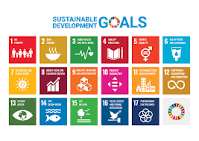OBSERVING THE IMPACT OF TRAFFIC PATTERNS ON PEDESTRIAN LIFE
In the bustling heart of Nepal’s cities, the rhythm of daily life is often
dictated not by footsteps but by the ceaseless flow of vehicles. From the
narrow alleys of Thamel to the wide avenues of New Baneshwor, traffic patterns
shape how pedestrians move, pause, and negotiate their environment. For those
on foot, navigating urban spaces is a delicate dance of vigilance, patience,
and adaptation—one that reveals much about the interplay between urban
planning, social behavior, and the lived experience of city life.
Walking through busy intersections, one observes how traffic lights and
pedestrian crossings attempt to impose order on the chaos. Yet, in practice,
these signals are often ignored or overridden, as impatient drivers squeeze
through, honking and accelerating at will. Pedestrians, in turn, develop their
own strategies—timing their steps between vehicles, using sidewalks wherever
available, or crossing streets at unofficial spots. This improvisation is both
a testament to human resilience and a stark reminder of infrastructural shortcomings.
Traffic congestion, a daily reality in Kathmandu and other growing cities,
further complicates pedestrian life. Jam-packed roads slow vehicles but often
push pedestrians onto crowded sidewalks or into streets themselves, blurring
boundaries meant to separate cars from people. Street vendors, parked
motorcycles, and uneven pavements reduce walking space, forcing pedestrians
into closer proximity with moving traffic. For children, the elderly, and those
with disabilities, this encroachment poses serious safety risks and limits
their mobility.
Yet, amidst these challenges, pedestrian life is vibrant and dynamic.
Sidewalks double as marketplaces, social spaces, and informal meeting points.
People pause to chat, shop, or rest, turning mere transit zones into lively
communal hubs. This coexistence of movement and pause reflects the layered
reality of urban life, where the necessity to traverse meets the human need to
connect.
The impact of traffic patterns also extends beyond physical movement.
Noise, pollution, and the constant threat of accidents affect pedestrian
wellbeing, creating stress and reducing the quality of outdoor experiences.
These environmental factors disproportionately affect those who rely on walking
as their primary mode of transport, often the city’s less privileged residents.
Urban planners and policymakers face the complex task of balancing vehicle
flow with pedestrian safety and comfort. Initiatives such as dedicated
footpaths, pedestrian bridges, timed crossings, and traffic calming measures
offer potential solutions. Yet, effective implementation requires not only
infrastructure but also public awareness and respect for shared spaces.
Drivers, pedestrians, and authorities must collaborate to create an environment
where all can coexist safely.
Interestingly, community-driven efforts have begun to reshape pedestrian
experiences. Neighborhood clean-ups, awareness campaigns about road safety, and
grassroots advocacy for better sidewalks demonstrate local commitment to
improving conditions. These initiatives highlight the importance of
participatory urbanism, where citizens actively engage in shaping the spaces
they inhabit.
Ultimately, observing the impact of traffic patterns on pedestrian life
reveals more than just the logistical challenges of urban movement. It exposes
underlying questions about accessibility, equity, and the human right to the
city. Pedestrians—often the most vulnerable road users—deserve spaces that
acknowledge their presence, protect their safety, and enhance their daily
experience.
As Nepal’s cities continue to expand and motorization increases,
reimagining urban spaces to better serve pedestrians is essential. It is not
merely about easing traffic flow but about reclaiming the city for its
people—those who walk its streets, pause at its corners, and weave the vibrant
social fabric that gives urban life its meaning.

Comments
Post a Comment